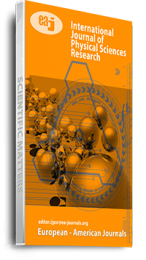Kargi is located between latitudes 2.476944 and 2.520833 N and longitudes 37.542778 and 37.601944 E covering an area of approximately 31.26 km2. Health facilities in the area have reported a number of cancer disease cases and deaths annually thus prompting for the study. 14 number water samples were collected in Kargi, Marsabit with the aim of assessing the area’s environmental radioactivity together with radiological health hazard. Radionuclides are considered as radiation exposure source which has been recorded to have damaging health effects for such populations living in high back-ground radiation areas. Natural radioactivity concentrations owing to 40K, 232Th and 226Ra radionuclides were measured by using gamma ray spectrometry employing a high purity germanium (HPGe) type detector at University of Nairobi’s Nuclear Science & Technology Institute, INST. To assess the natural radioactivity’s radiological hazard, absorbed dose rate, radium equivalent together with effective dose have been computed and results compared with internationally accepted values. The mean values for activities for 40K ranged from -0.88 to 81.22 Bql-1 (mean: 52.68±25.07 Bql-1), 232Th ranged from -2.00 to 7.99 Bql-1(mean: 2.20±2.74 Bql-1) and 226Ra ranged from -0.25 to 7.84 Bql-1(mean: 3.55±3.04 Bql-1). Mean 232Th and 40K values were 2 times and 5 times higher than the limit values respectively, hence the area can be categorized a high back-ground radiation area, HBRA. The mean values with their standard deviations for calculated and measured dose rates below and above surface (1 m from the ground) were 5.37±2.93 and 77.76±27.82 nGyh-1 respectively. The computed radium equivalent values of all 14 samples were lower than accepted limit of 370 Bqkg-1 (Lu Xinwei et al., 2006). The mean elemental ratio for Th/U was lower than 3, an indication of thorium depletion or enrichment in the area. Investigated waters in this area are acceptable for life-long human consumption since their values of annual effective doses proved lower than the world-wide values.
Keywords: Activity, gamma-ray spectrometry, kargi-marsabit, lifetime cancer risk, nuclear science

